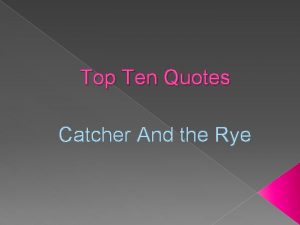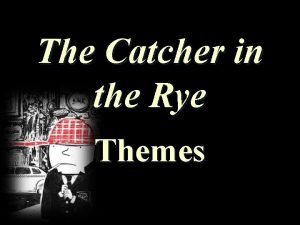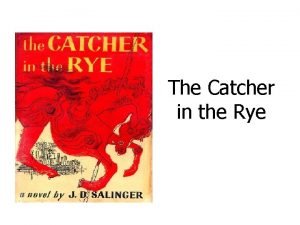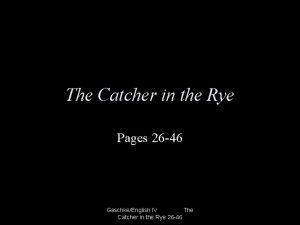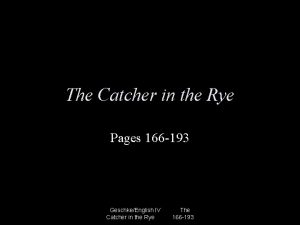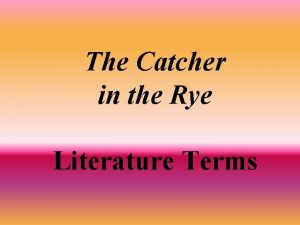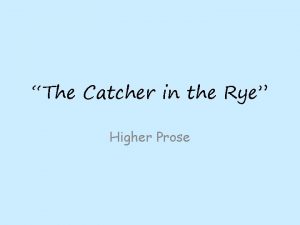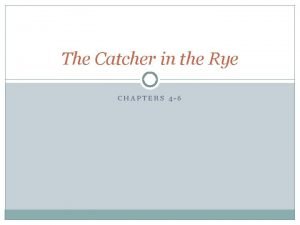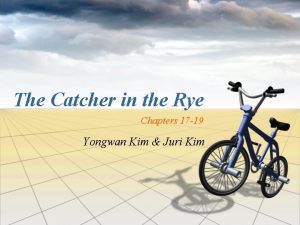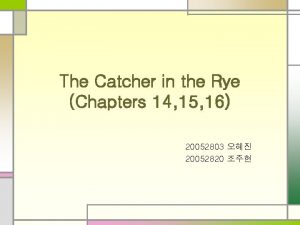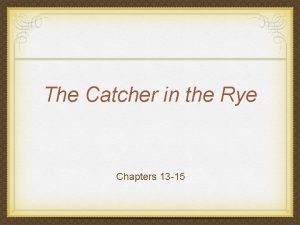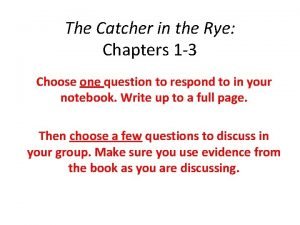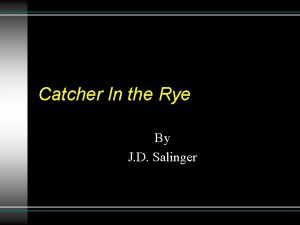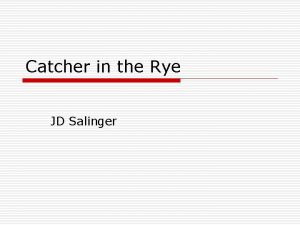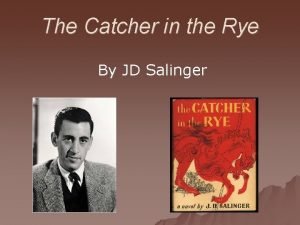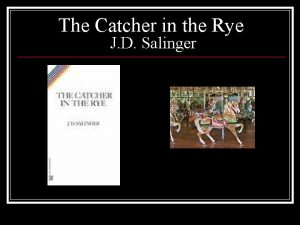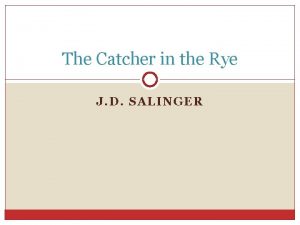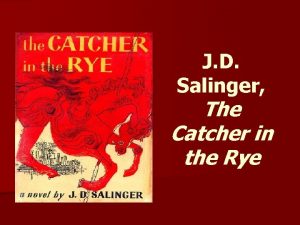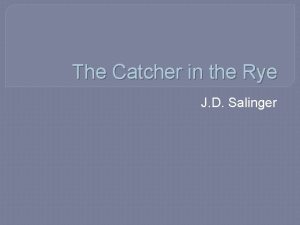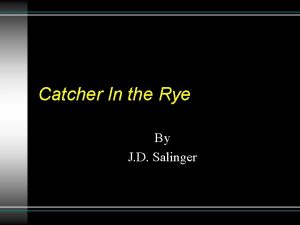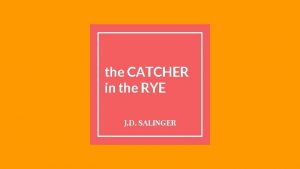JD Salinger and The Catcher in the Rye












- Slides: 12

JD Salinger and The Catcher in the Rye

Salinger’s Life • Born Jerome David Salinger in 1919 • Attended Valley Forge Military Academy, probably the model for Pencey Prep, and dropped out after two years. • Drafted into the army in 1942 and was involved in the invasion of Normandy where his unit suffered heavy losses. • Several chapters of The Catcher in the Rye were in Salinger’s rucksack on Utah Beach, on D-Day. • He met Ernest Hemingway during the war, in Paris. • He wrote primarily short stories throughout the war, including “For Esme, With Love and Squalor. ” • Wrote The Catcher in the Rye in 1951, and was unable to deal with the fame and publicity. • Went into seclusion in New Hampshire and basically disappeared forty years. • He passed away on January 27, 2010. • Rumors of hundreds of unpublished stories have so far not been proven true.

The Catcher in the Rye • In the tradition of picaresque narratives like The Adventures of Huckleberry Finn • Has been called a modern bildungsroman -- a novel whose principal subject is the moral, psychological, and intellectual development of a usually youthful main character (Dictionary. com). • Fits into a an era of post-war literature in which authors began to question the white picket fence world of the fifties. • Like Huck Finn, the book was heavily criticized for being vulgar and remains one of the most widely challenged and banned books of all time.

The Catcher in the Rye • Salinger is sometimes half-jokingly credited with “inventing the teenager. ” • Catcher was, however, the starting point for a new way to think about the weird transition period between childhood and adulthood. • Children, in fact, play a prominent symbolic role in most of Salinger’s work. • Salinger’s war experience probably figures heavily into the character of Holden Caulfield. • Is the human experience of time – of growing up, leaving childhood, making compromises, maybe “selling out” – similar to, or different from, the loss of innocence experienced in war?

''Anyway, I keep picturing all these little kids playing some game in this big field of rye and all. Thousands of little kids, and nobody's around - nobody big, I mean, except me. And, I'm standing on the edge of some crazy cliff. What I have to do, I have to catch everybody if they start to go over the cliff - I mean if they're running and they don't look where they're going I have to come out from somewhere and catch them. That's all I'd do all day. I'd just be the catcher in the rye and all. ''

The Catcher in the Rye • Catcher ushered in a whole new way the American culture thought about the teen years. • Question: to what extent is the modern idea of ”the teenager” a product of the Second World War? • https: //www. youtube. com/watch? v=w. XRg. AXU 1 -T 4






 Quotes for catcher in the rye
Quotes for catcher in the rye Theme of the catcher in the rye
Theme of the catcher in the rye The catcher in the rye meaning
The catcher in the rye meaning Catcher in the rye horwitz
Catcher in the rye horwitz Why doesn't holden throw the snowball
Why doesn't holden throw the snowball Mr antolini's advice to holden
Mr antolini's advice to holden Catcher in the rye meaning
Catcher in the rye meaning Robert burns catcher in the rye
Robert burns catcher in the rye Chapter 4 catcher in the rye
Chapter 4 catcher in the rye Catcher in the rye chapter 17-19 summary
Catcher in the rye chapter 17-19 summary Bobby fallon catcher in the rye
Bobby fallon catcher in the rye Chapter 13 catcher in the rye quotes
Chapter 13 catcher in the rye quotes The catcher in the rye chapter 1
The catcher in the rye chapter 1
